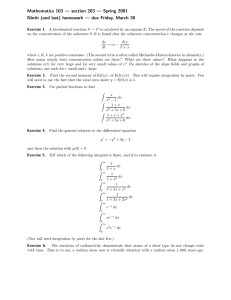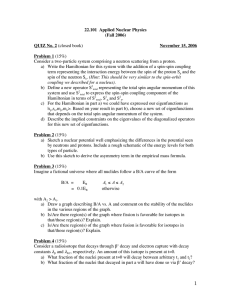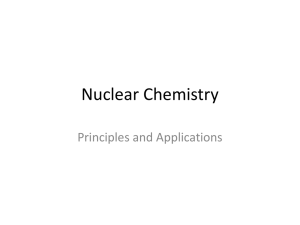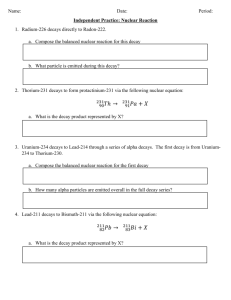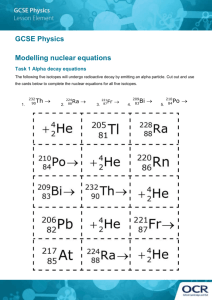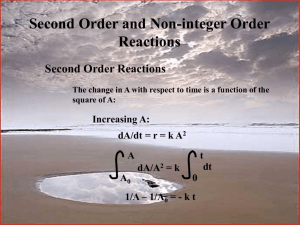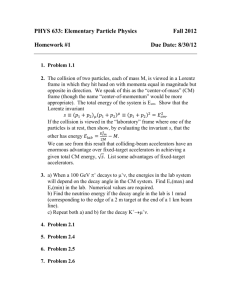Project “Radium decay”
advertisement
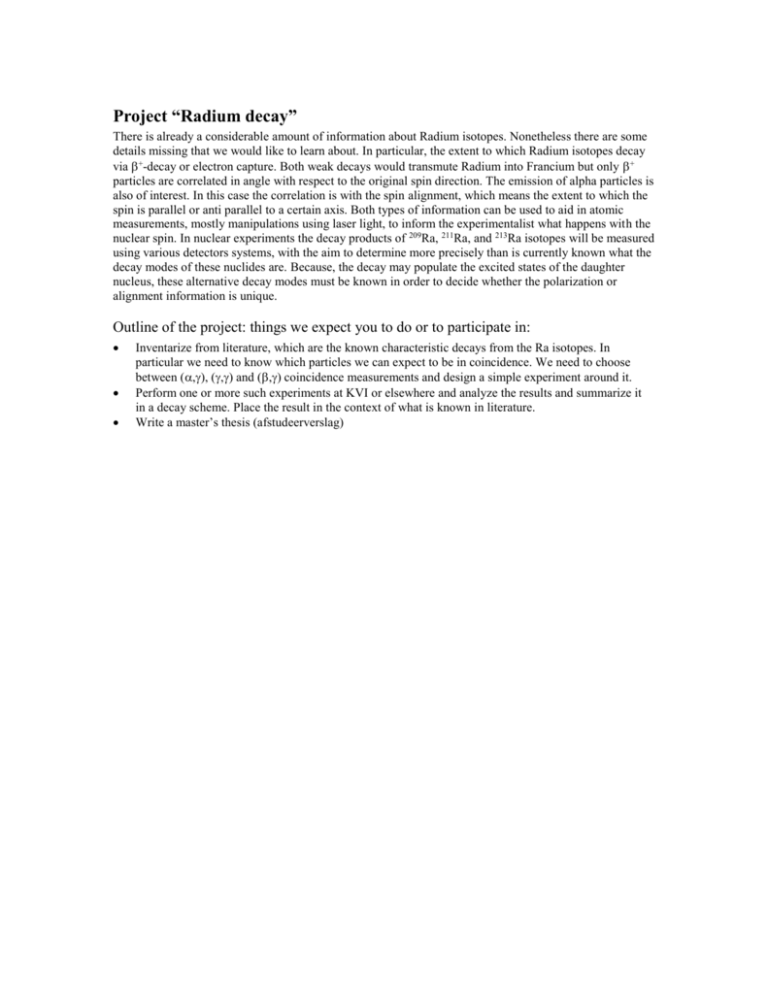
Project “Radium decay” There is already a considerable amount of information about Radium isotopes. Nonetheless there are some details missing that we would like to learn about. In particular, the extent to which Radium isotopes decay via +-decay or electron capture. Both weak decays would transmute Radium into Francium but only + particles are correlated in angle with respect to the original spin direction. The emission of alpha particles is also of interest. In this case the correlation is with the spin alignment, which means the extent to which the spin is parallel or anti parallel to a certain axis. Both types of information can be used to aid in atomic measurements, mostly manipulations using laser light, to inform the experimentalist what happens with the nuclear spin. In nuclear experiments the decay products of 209Ra, 211Ra, and 213Ra isotopes will be measured using various detectors systems, with the aim to determine more precisely than is currently known what the decay modes of these nuclides are. Because, the decay may populate the excited states of the daughter nucleus, these alternative decay modes must be known in order to decide whether the polarization or alignment information is unique. Outline of the project: things we expect you to do or to participate in: Inventarize from literature, which are the known characteristic decays from the Ra isotopes. In particular we need to know which particles we can expect to be in coincidence. We need to choose between (,), (,) and (,) coincidence measurements and design a simple experiment around it. Perform one or more such experiments at KVI or elsewhere and analyze the results and summarize it in a decay scheme. Place the result in the context of what is known in literature. Write a master’s thesis (afstudeerverslag)


